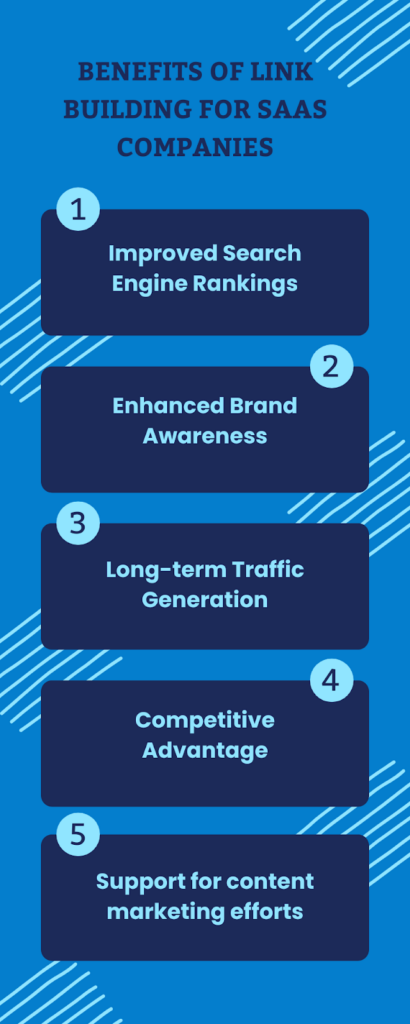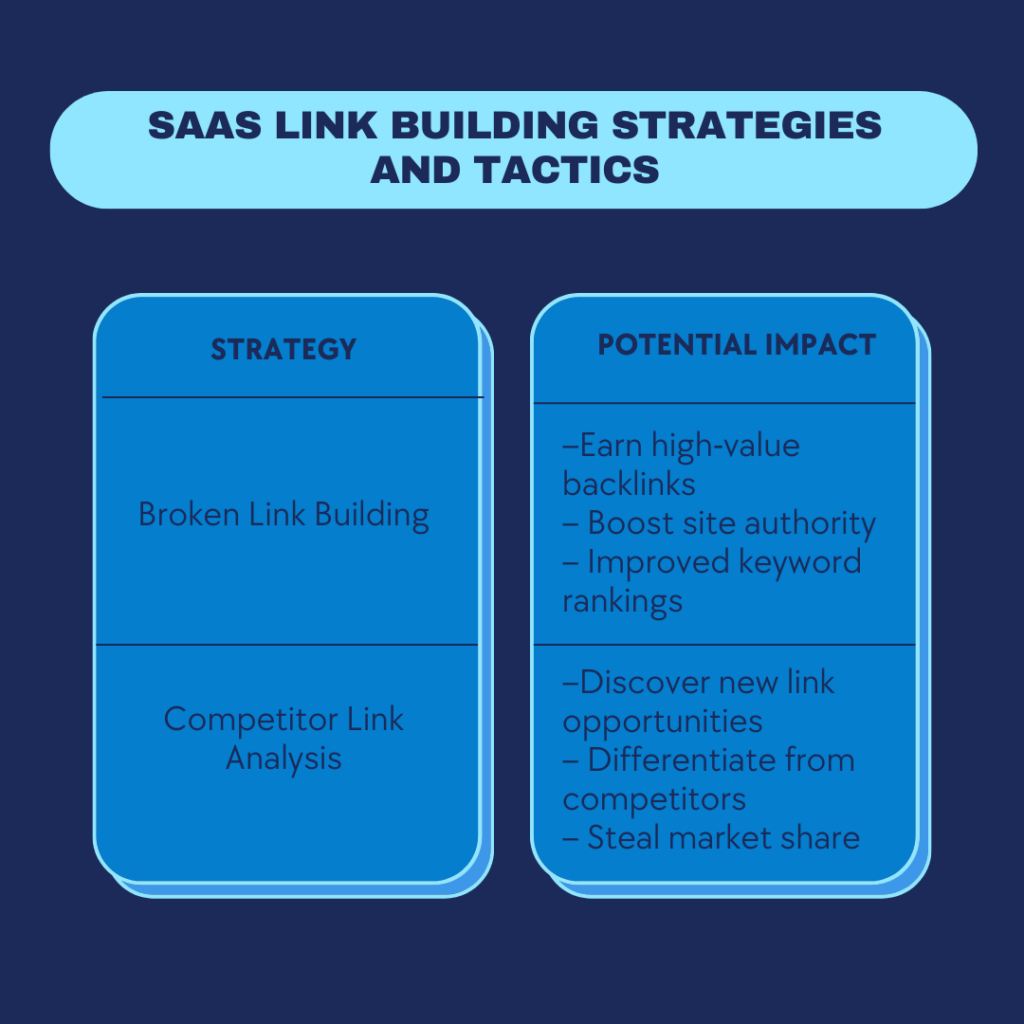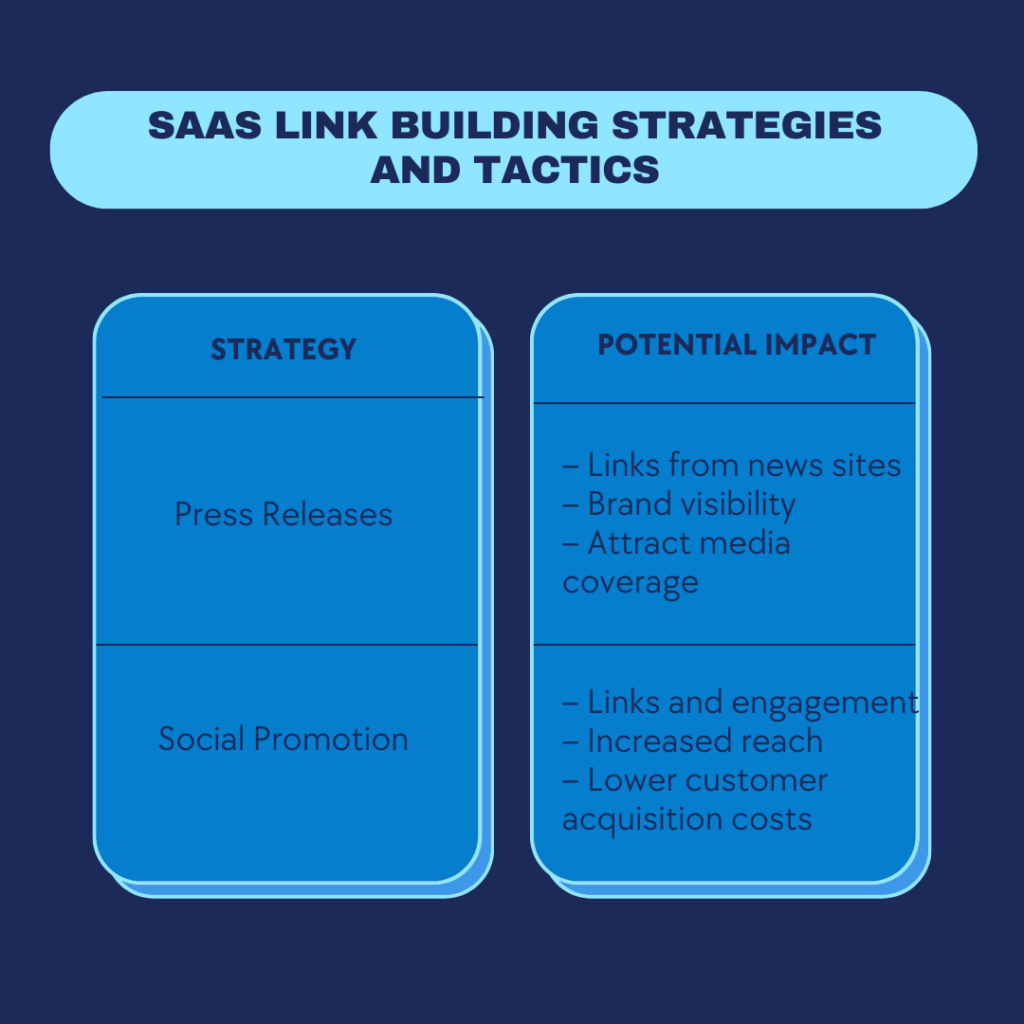Show:
Link Building for SaaS Companies: The Ultimate Guide
The worldwide surge in demand for cloud-computing and user-friendly software solutions that facilitate daily productivity has skyrocketed SaaS service providers. SaaS solutions bring simplification, access, and affordability together so that businesses can now have access to complicated software and IT infrastructure components easily and at lower costs.

Its exponential growth fueled the market value of the top 10 companies to break $1 trillion for the first time in 2019. The latest data suggests that approximately 17,000 SaaS companies exist worldwide. The lion’s share (9,100) of these SaaS companies are based in the United States.
Standing out in this fierce is crucial for SaaS companies. Establishing a strong online presence is paramount for SaaS companies to thrive in their respective market. Having a stellar product and exceptional services alone does not suffice to survive. You need to be visible in places where your customers can get to see you and know you.
Visibility plays a major role in attracting and retaining customers. This is where link building comes into play.
Why Do SaaS Companies Need Link Building?
Going by the search engine’s rule book, your website must rank high on SERP. Ranking high on SERP increases the visibility and likelihood of users clicking on your website’s link. As visibility increases, organic traffic, potential customers, higher engagement, and conversions also increase.
Ranking high on SERP enables websites to receive more clicks compared to websites that appear lower on SERP results. From a user’s viewpoint, they tend to click on the top results to get answers to their search queries.
To improve online visibility and to rank on top, your website requires effective search engine optimization (SEO) strategies that include:
- Obtaining high-quality backlinks
- Optimizing website content
- Improving website speed and performance
- Ensuring mobile-friendliness
Contacting agencies for link building provides expertise, saves time, offers scalability, and accesses specialized tools, enhancing the efficiency and effectiveness of link building campaigns.
Link building outsourcing involves hiring external agencies or individuals to acquire backlinks from other websites to improve a site’s search engine optimization (SEO) performance.
Link Building for SaaS Companies
Link building is acquiring links and hyperlinks from other websites in your niche to your website. Besides enhancing search engine rankings it elevates brand authority and credibility. Link building for SaaS companies is an effective marketing strategy tailored to promote their unique offerings.
It drives targeted traffic, improves conversion rates, and ultimately fosters sustainable growth. No wonder it’s called a game-changer. When you strategize building high-quality links for SaaS companies, it acts as “upvotes” or endorsements from other sites, signaling to search engines like Google that your site is reputable, authoritative, and relevant.
Link building for SaaS companies has a ripple effect as it begins by improving your search engine rankings, driving organic traffic, and ultimately, acquiring more customers for your SaaS product.
How to Build Links for SaaS companies?
Create valuable content such as blog posts, infographics, whitepapers, or case studies that attract backlinks from other websites naturally. SEO for software companies focuses on providing content that
- Solves problems
- Provides insights
- Offers unique perspectives
Such content attracts more links.
Then, proceed to
- Contribute guest posts to other blogs or industry publications which is an effective way to earn backlinks. Ensure that your guest posts provide value to the readers and are relevant to your SaaS product or industry.
- Build partnerships with complementary SaaS companies or influencers in your industry that can lead to opportunities for backlinking.
By doing so, you can mutually link to each other’s websites when you collaborate on content, joint webinars, or co-marketing campaigns.
Other ways to acquire backlinks from high-quality, relevant websites within your industry or niche are:
- Actively reaching out to journalists, bloggers, and influencers to promote your SaaS product. Getting featured in publications or securing interviews can result in valuable backlinks from reputable sources.
- Harnessing the power of Social Media by engaging with your audience on social media platforms and industry forums.
- Sharing valuable content and participating in discussions can attract backlinks as users share your content across their networks.
- Regularly monitor your backlink profile using tools like Google Search Console or third-party SEO tools.
- Analyzing your backlinks to identify opportunities for improvement and to ensure that your link building efforts are yielding positive results.
It is advisable to stay away from black hat SEO tactics such as buying links or participating in link schemes.
These practices result in penalties from search engines and harm your website’s reputation in the long run.

Benefits of Link Building
Advanced Link-Building Strategies
With the right frameworks in place, link building unfolds as a blend of art and science – part creative communication, part data-backed optimization. The strategies below encompass the technical and the human, the numbers, and the narratives.
Resolve Canonicalization Issues
Before architecting an outreach strategy, it’s imperative to maximize link juice preservation from existing assets. 41% of websites contain duplicate content issues that sap authority when the pages link is not correctly canonicalized. Technical audits should:
- Thoroughly identify URL variations, duplicates, and syndicated content leading to dilution or loss of rankings. For example, having the same content available under both HTTP and HTTPS URLs splits authority unnecessarily.
- Implement comprehensive canonical tags, 301 redirects, change requests, or platform exclusions to consolidate authority under one preferred version. For instance, use the rel=canonical HTML tag to signal the definitive URL.
- Confirm adaptations via advanced SEO crawlers like Screaming Frog, which perform a comprehensive analysis of on-page elements including canonical tags. The software will detect any outstanding duplicate content risks not yet addressed.
- Re-submit updated sitemaps to search engines once changes are implemented and verified to accelerate reprocessing.
- Streamlining canonicalization channels links equity to pages that matter most, preventing authority from leaking away to duplicative or irrelevant URLs.
Craft Captivating Outreach
Even armed with mountains of data, cold outreach emails average just a 3% open rate. That’s where creativity comes in. Reach out to your potential clients through an effective outreach strategy:
Personalize subject lines and greetings based on the recipient’s name, company, brand, and interests rather than taking a one-size-fits-all spam approach. Put on your creativity cap and carefully incorporate humor via puns, interesting questions, or witty analogies instead of overplaying this or crossing boundaries.
Lead with unique value propositions for your prospect upfront rather than making them dig through paragraphs of text. Experiment with various emotional appeals like exclusivity, humor, and reciprocity in addition to common triggers like fear of missing out.
A/B test your email template variants across subscriber segments to determine the optimal resonance. Track the results by closely monitoring open and response rates to double down on what grabs attention amid overflowing inboxes.
Little personal touches like emojis, GIFs, or quirky questions paired with relevant offers can refresh tried-and-tested templates.
Monitor Performance Metrics
Link building isn’t a “set it and forget it” endeavor; consistent tracking against key performance indicators keeps link building campaigns back on track. Monitoring backlink growth, domain authority gains, and content engagement at regular intervals enables agility in maximizing what works and revising less fruitful avenues.
Essential metrics to track include:
- Domain Authority: Monitor monthly changes in this Moz metric that predicts search rankings based on backlink profile quality
- Referring Domains: Keep count of sites linking back to yours as a measure of awareness and authority
- Organic Traffic: Track monthly visitors from search engines to gauge how link building impacts discoveries
- Lead Generation: Connect the dots between link building and business impact by seeing how many organic users convert into marketing-qualified leads
Based on 12-month or 6-month goals, determine the numeric lifts expected across each metric and course-correct if targets aren’t hit. Rely on tools like Ahrefs, Moz, SEMrush, and Google Analytics to extract this data.

Uncover Image Crediting Opportunities
In the social media world, images spread rapidly. Reverse image searches uncover unauthorized versions posted without attribution. Upon finding such visuals:
– Verify ownership using registration systems like Digimarc
– Reach out requesting credit alongside descriptions or captions
– Secure high-quality backlinks and referral links pointing to traffic
Industry studies show image credits drive a 12% uplift in attribution links.
Participate in Interviews and Roundups
In 2024, what stands out more than ever is genuine human connection. That makes participating in expert interviews and roundups a stellar way for SaaS brands to get exposure, backlinks, and recognition.
Interviews enable founders and leaders to share unique origin stories and behind-the-scenes insights.
Roundup posts centered around “best tips for X” or “top tools for Y” aggregate advice from industry professionals.
In both cases, ensure you provide thoughtful commentary that aligns with your SaaS positioning.

Strategize Guest Post Partnerships
Strategizing guest post partnerships is a crucial component of an effective link-building strategy for SaaS companies. This approach involves identifying authoritative websites, blogs, and publications within the SaaS industry or related niches and establishing mutually beneficial relationships to contribute guest posts. Some best practices include:
- Research thoroughly to identify target websites with strong online presence and engaged audiences.
- Assess the relevance and authority of potential partners based on factors like domain authority, readership demographics, and content quality.
- Craft personalized outreach pitches to demonstrate an understanding of the target website’s audience and content style while highlighting the value of proposed guest post topics.
These topics should offer unique insights, solve common pain points, or provide actionable strategies. Upon acceptance, high-quality content is created adhering to editorial guidelines, incorporating relevant data and examples.
Backlinks to the SaaS company’s website are strategically placed within the guest post content, enhancing user experience and providing additional value. After publication, active promotion and engagement are key, leveraging the SaaS company’s digital channels to amplify the guest post’s reach.
Long-term relationships are nurtured through ongoing communication and collaboration, fostering future opportunities for guest contributions. Through strategic guest post partnerships, SaaS companies can effectively leverage the authority and audience engagement of established websites to build quality backlinks and enhance brand visibility.

Exchange Links Ethically
Exchanging links ethically is a practice aimed at building mutually beneficial relationships between websites while adhering to search engine guidelines and maintaining transparency and integrity.
In ethical link exchanges, websites collaborate to link to each other’s content in a manner that provides value to their respective audiences. Rather than engaging in manipulative tactics solely for the purpose of improving search engine rankings, ethical link exchanges focus on genuine partnerships and the exchange of relevant, high-quality content.
This approach ensures that the links are natural, contextually relevant, and contribute positively to the user experience. Transparency is essential in ethical link exchanges, with websites openly disclosing the nature of their collaboration to both users and search engines.
Additionally, ethical link exchanges prioritize long-term relationships and mutual trust between websites, fostering a community-driven approach to link building. By exchanging links ethically, websites can enhance their online visibility, authority, and credibility while adhering to ethical standards and promoting a positive user experience.
Be judicious when trading backlinks to avoid violating Google guidelines. Tactics to sustain credibility include:
– Limiting exchange to 1 or 2 trusted partners
– Ensuring all links add informational value
– Monitoring anchor text diversity on both sides
Create Linkable Resources
If you want other websites to link to your content, they need to add value to their readers. Find out what your users or potential customers are looking for. Create such content so that it attracts backlinks.
Survey reports are one. Here’s an example of a link building survey report that illuminates the evolving link-building strategies and tools landscape.

Capitalize on Link-Building Tools
Automating link prospecting via Ahrefs, Majestic, SEMRush and even Google’s own operators can accelerate finding opportunities. Focus on:
– Keyword tracking for platform mentions
– Discovering broken links and backlinks to replace
– Monitoring competitors’ earned links
Tools identify website events like redesigns, leadership changes, and partnership announcements prime timing for new outreach.
Spotlight Original Research
Publishing primary research not only provides a content edge; it can significantly boost domain authority. Consider:
– Surveying your user base around challenges
– Compiling key industry or process data
– Interviewing thought leaders featured in roundups
88% of B2B content marketers say original research gives a competitive advantage. Distill insights into ebooks, kits, or frameworks that present info in a captivating manner.
Adapt to Evolving SEO Landscapes
Yesterday’s link-building tactics may not reflect updates across search algorithms, platform policies, or audience interests. SaaS brands must:
– Closely track updates from Google and other web entities
– Continually test innovative, high-value content types
– Forgo practices deemed manipulative or misleading
The avoidance of trends like thin affiliate content shows respect for users and long-term efficacy over fast wins.
Link building for SaaS companies involves a subject matter expert (SME) to deal with technical SEO that would suit this type of niche the best.
Content Marketing for Link Building
Content marketing is a strategic approach focused on creating and distributing valuable, relevant, and consistent content to attract and retain a clearly defined audience — ultimately, to drive profitable customer action.
In the realm of Search Engine Optimization (SEO), content marketing plays a pivotal role in a link-building campaign, which is essential for enhancing a website’s visibility and ranking on search engines like Google.
The core of effective backlink-building techniques lies in the ability to produce content that others find valuable enough to link to. Produce high-quality, engaging content that can attract backlinks naturally from other websites, bloggers, and content creators who wish to share it with their audiences.
Pay attention to the keywords that your client would rank for in their niche and work on the different types of SEO keywords to craft a content strategy.
This could be in the form of blog posts, infographics, research studies, whitepapers, videos, and more.
Create Shareable Content
Content that is original, informative, and provides value to your target audience is more likely to be shared and linked to. Create such content. Don’t just stick to one format, rather include how-to guides, industry insights, original research, and any content that addresses specific questions or needs within your niche.
Utilize Different Content Formats
Diversifying your content format can also help in reaching a wider audience and, in turn, garner more backlinks. For example, infographics are highly shareable and can convey complex information in a digestible format, making them more likely to be linked to other sites.
Guest Blogging
Writing guest posts for other websites in your industry not only positions you as an authority but also allows you to gain backlinks from reputable sites. This reciprocal relationship benefits both parties and helps in building backlinks pointing to your site’s domain authority.
Content Promotion
Creating great content is just the first step. Actively promoting your content through social media, email newsletters, and other channels increases its visibility and the likelihood of it being linked.
Link Building Monitoring and Optimization
With these strategies activated, consistent tracking against key performance indicators keeps link building efforts on track. Monitoring backlink growth, domain authority gains, and content engagement at regular intervals enables agility in maximizing what works and revising less fruitful avenues.
Asking critical questions is key:
– How have domain authority and backlinks increased month over month?
– Which content pieces attract the most links and shares?
– What is the ROI of link building in lead generation?
Course correct across underperforming areas and double down on strengths.
Conclusion
Link building is a crucial component of the digital marketing strategy for SaaS companies, offering a multitude of benefits that extend beyond just search engine optimization. By securing quality backlinks, SaaS companies can enhance their visibility, credibility, and search engine rankings, leading to increased organic traffic, brand awareness, and competitive advantage.
Moreover, the long-term traffic generation and synergy with content marketing efforts make link building a valuable investment for sustained growth and success in the highly competitive SaaS industry. Outsource your SEO link building to streamline the process, and to leverage specialized expertise to secure quality backlinks efficiently. This would ultimately contribute to enhanced visibility, credibility, and competitive edge in the digital landscape.
FAQs
1. What is link building, and why is it important for SaaS companies?
Link building is the process of acquiring hyperlinks from other websites to your own. For SaaS companies, link building is essential as it helps improve search engine rankings, drive organic traffic, increase brand visibility, and establish credibility and authority within the industry.
2. What are the different strategies for link building for SaaS companies?
Strategies for link building for SaaS companies include creating high-quality content, guest blogging, utilizing online directories and review sites, participating in industry forums and communities, collaborating with influencers and partners, creating shareable tools or resources, optimizing press releases, and monitoring competitor backlinks.
3. How can SaaS companies ensure ethical link building practices?
SaaS companies can ensure ethical link building practices by focusing on providing value to their audience through relevant and high-quality content, maintaining transparency in their link-building efforts, avoiding manipulative tactics such as buying links and adhering to search engine guidelines and best practices.
4. How can SaaS companies measure the effectiveness of their link-building efforts?
SaaS companies can measure the effectiveness of their link-building efforts by tracking metrics such as domain authority, backlink quantity and quality, referral traffic, keyword rankings, and conversions. Tools like Google Analytics, SEMrush, Ahrefs, and Moz can be used to monitor and analyze these metrics.
5. What are some common challenges faced by SaaS companies in link building?
Common challenges faced by SaaS companies in link building include fierce competition in the industry, acquiring high-quality backlinks from authoritative websites, maintaining a diverse and natural backlink profile, overcoming algorithm updates and penalties, and ensuring long-term sustainability in link-building efforts.
6. How can SaaS companies leverage content marketing in their link-building strategy?
SaaS companies can leverage content marketing by creating informative, valuable, and shareable content that attracts backlinks naturally. This can include blog posts, whitepapers, case studies, infographics, videos, and interactive tools that address the needs and interests of their target audience.
7. What role do social media and outreach play in link building for SaaS companies?
Social media and outreach play a crucial role in link building for SaaS companies by promoting content, engaging with influencers and industry experts, reaching out to potential guest blogging partners, and building relationships with relevant websites and publications within the industry.
8. What is an SEO slug?
An SEO slug is the part of a URL that identifies a particular page and is optimized for search engines. It typically consists of relevant keywords related to the page’s content, is concise, and descriptive, and helps improve the page’s visibility in search engine results. SEO slugs contribute to better indexing and ranking by search engines, enhancing the page’s overall SEO performance.

 Return to Previous Page
Return to Previous Page








